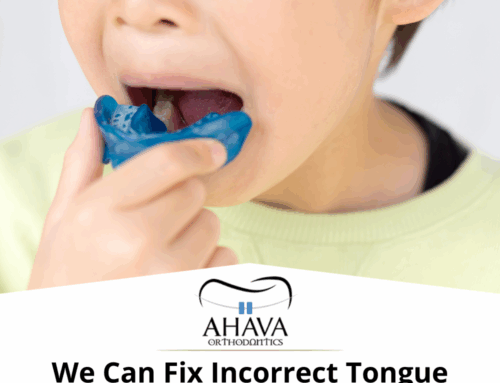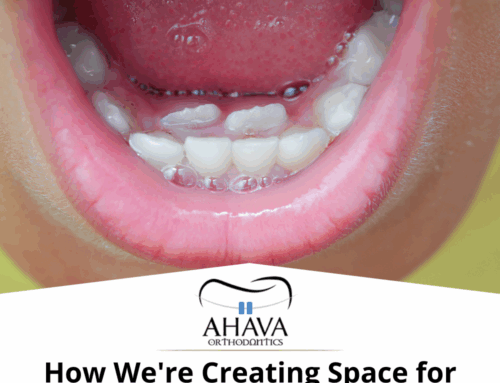Ahava Orthodontics helps Fort Worth families understand the differences between ceramic vs metal braces so teens can feel confident in their treatment choice. The team walks patients through what to expect, how each option works, and which style best fits their lifestyle.
For many families, the big question is whether to choose ceramic or metal braces. Both straighten teeth effectively, but appearance, durability, and comfort often guide the decision. Here’s what parents and teens need to know.
What Are Ceramic Braces?
Ceramic braces use clear or tooth-colored brackets that blend with the teeth, making them less noticeable. They work like traditional braces, but the material gives a more discreet appearance.
For teens who are self-conscious about their smile, ceramic braces can make orthodontic treatment feel less intimidating. They are especially popular for older students who want straighter teeth without the classic “metal smile.”
Ceramic braces may stain if not cared for properly, but with good brushing habits and dietary awareness, they can remain subtle throughout treatment. Learn more about orthodontic options on our Braces page.
What Are Metal Braces?
Metal braces are the most common orthodontic option, known for their strength and reliability. Today’s metal braces are smaller and more comfortable than in the past, and teens can choose colorful elastics to personalize their look.
Metal braces are less likely to break than ceramic, which can make treatment smoother. They are often recommended for more complex bite corrections or for teens who may not be as careful with their braces.
For many families, the durability of metal braces gives peace of mind, especially during sports or high-energy activities. To see how braces fit into different stages of care, explore our Orthodontics Overview.
Appearance: Subtle vs. Classic Look
One of the biggest differences in ceramic vs metal braces is visibility. Ceramic brackets are designed to blend in, while metal braces are easy to see.
-
Ceramic: Tooth-colored or clear, low-profile, often preferred for teens who want subtlety.
-
Metal: Shiny, noticeable, but customizable with colored elastics for a fun look.
Appearance often matters most to teens, so it helps to weigh whether they prefer discreet or expressive orthodontics. The American Association of Orthodontists provides additional information on appearance and treatment choices.
Comfort and Care Differences
Both ceramic and metal braces can cause some initial soreness when adjusted. However, ceramic brackets are slightly larger and smoother, which some patients feel are gentler on the lips and cheeks.
Care also plays a role. Ceramic braces require more attention to cleaning, since brackets can stain from foods like tomato sauce, curry, or soda. Metal braces don’t stain, but they do still require careful brushing and flossing to prevent cavities.
Teens who are diligent with hygiene usually do well with either option. If you’re considering braces for your child, our Contact page makes it easy to schedule a consultation.
Durability and Breakage
Metal braces win when it comes to strength. The steel brackets are very resistant to breakage and can handle strong chewing forces.
Ceramic braces are strong but more brittle, and brackets may chip or crack under pressure. This can lead to extra visits for repairs, which may extend treatment time.
For athletes, musicians, or teens who snack on hard foods, metal braces may be the safer choice. For responsible wearers who value discretion, ceramic braces remain a good fit.
Treatment Time: Is There a Difference?
In most cases, treatment time is similar for ceramic and metal braces. Both move teeth with the same precision and mechanics.
However, if a ceramic bracket breaks often or needs adjustments, this can add small delays. Orthodontists may also recommend metal braces for very complex cases where maximum durability is needed.
For straightforward orthodontic treatment, both options typically deliver results in the same timeframe.
What Parents Care About Most
Parents want treatment that works well, stays on track, and keeps their teen comfortable. They also want an orthodontic office they can trust.
At Ahava Orthodontics, families are guided through the pros and cons of ceramic vs metal braces. The orthodontist explains which option fits the teen’s bite, personality, and lifestyle. The practice also emphasizes ongoing support, so families know what to expect at every step.
One Fort Worth parent shared:
“My daughter chose ceramic braces because she wanted them to be less noticeable. The team explained how to care for them, and so far it’s been smooth sailing. She feels confident smiling again.”
Get the Help You Need
When you need answers about ceramic vs metal braces in Fort Worth, call 817-926-9777 to schedule a consultation. Ahava Orthodontics will explain the differences clearly, give your teen options, and create a treatment plan that builds a healthy, confident smile.




